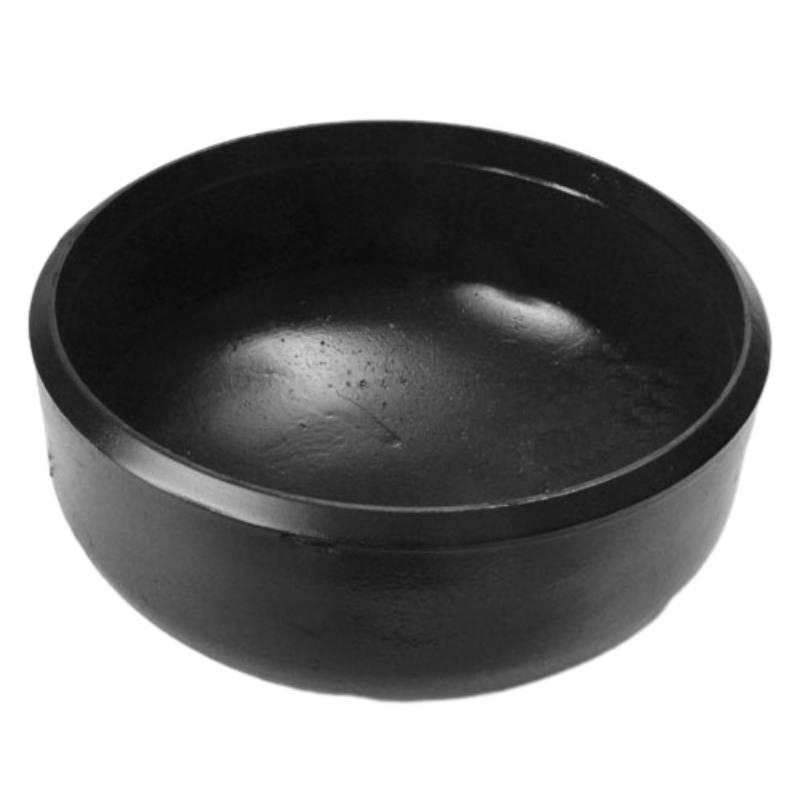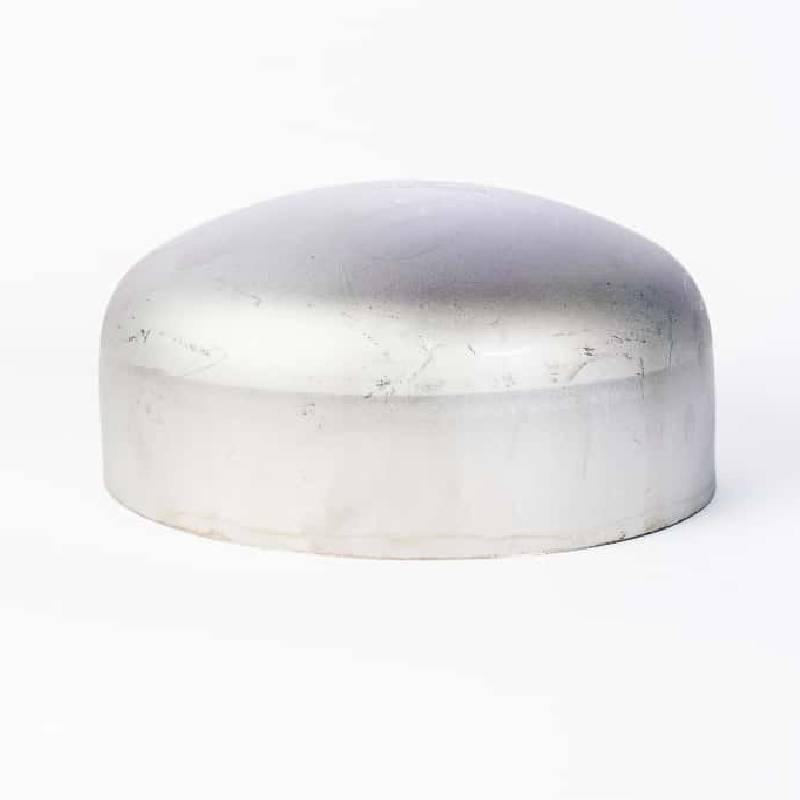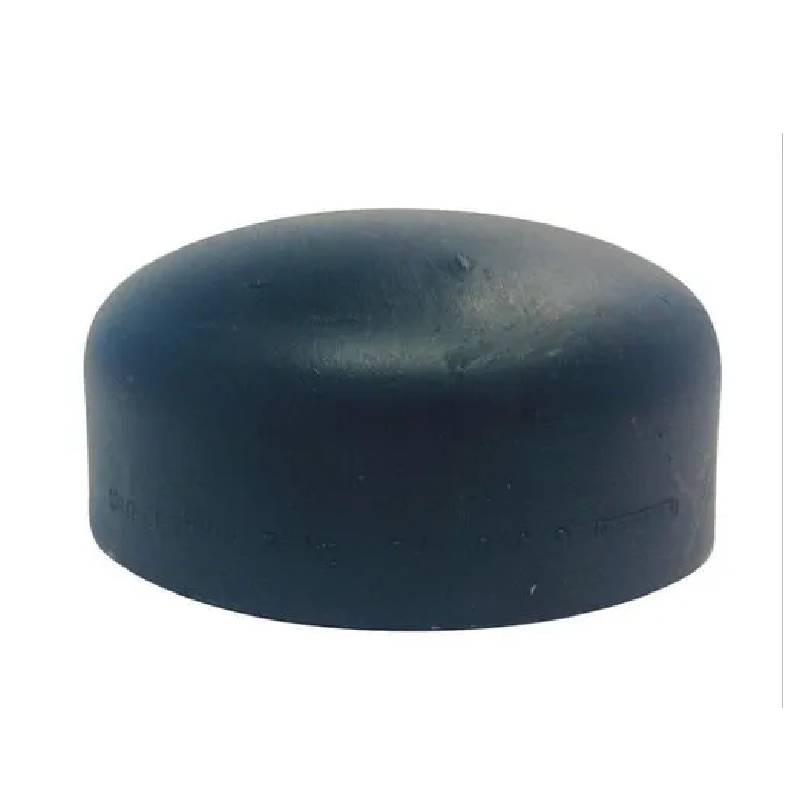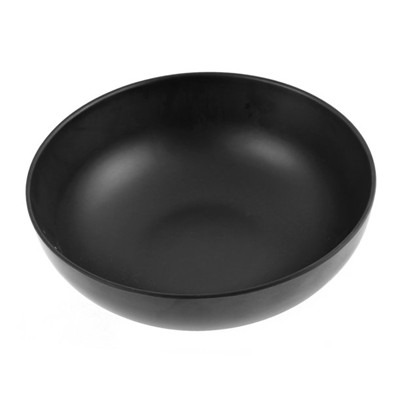-
Tausiga masani:
ANSI / ASME B16.9 pulou faʻapipiʻi e faʻapipiʻi i faʻamatalaga o loʻo faʻamatalaina e le American National Standards Institute (ANSI) ma le American Society of Mechanical Engineers (ASME). O lenei faʻasalalauga e faʻamautinoa ai le tutusa, fetaui, ma le faʻamaoni i le mamanu ma le faʻatinoga, faʻafaigofieina le tuʻufaʻatasia faʻatasi i faiga paipa.
-
Feso'ota'iga Su'ega Fa'amau:
E fa'apipi'i pulou fa'amau e ala i le uelo sa'o i le pito o se paipa, ma maua ai se feso'ota'iga tumau ma malosi. O le faiga o le uelo e aofia ai le fa'avevelaina o pito o le paipa ma le pulou i le mea e liusuavai ai, ona oomi fa'atasi lea e fai ai se fusi u'amea. O lenei auala faʻapipiʻi e maua ai se soʻotaga malosi ma le leak-proof, faʻaumatia le manaʻomia mo mea faʻamaufaʻailoga faaopoopo.
-
Tapuni fa'amau:
O le galuega autu o pulou faʻapipiʻi o le tuʻuina atu lea o se faʻamaufaʻailoga tapunia mo le pito o paipa i totonu o se paipa. O nei pulou o loʻo faʻaalia ai se faʻamau poʻo se mea mafolafola e ufiufi ai le avanoa o paipa, e puipuia ai le ulu atu poʻo le alu ese o sua poʻo kasa. O le fesoʻotaʻiga faʻapipiʻi e faʻamautinoaina se faʻamaufaʻailoga faʻamau, faʻaitiitia le lamatiaga o le gaʻo ma faʻamautinoa le faʻamaoni o le faiga.
-
Filifiliga Mea:
O lo'o maua pulou fa'apipi'i i mea 'ese'ese e fetaui ma tulaga fa'agaioiga eseese ma ala fa'asalalau. O mea masani e aofia ai le carbon steel, stainless steel, alloy steel, ma mea e leai ni ferrous e pei o le apamemea poʻo le kopa. O le filifiliga o meafaitino e fa'alagolago i mea e pei o le vevela, mamafa, tete'e o le pala, ma le fetaui ma le sua o lo'o feavea'i.
-
Talosaga tele:
ANSI/ASME B16.9 butt-welding caps e maua ai talosaga i pisinisi eseese, e aofia ai le suauʻu ma le kesi, petrochemical, gaosiga o vailaʻau, vai vai, ma le gaosiga o le eletise. E faʻaaogaina mo le faʻamaufaʻailogaina o pito o paipa, vaʻa, tane, ma meafaigaluega, tuʻuina atu puipuiga mai le faʻaleagaina, pala, ma lamatiaga o le siosiomaga.
-
Filifiliga Fa'apitoa:
A'o fa'apipi'i fa'amau fa'apipi'i i fua fa'atatau ma fa'amatalaga, o lo'o avanoa avanoa fa'apitoa e fa'afetaui ai mana'oga ma'oti o le poloketi. E mafai ona aofia ai suiga i le tele o le pulou, mafiafia, tulaga o meafaitino, ma le mae'a. O pulou faʻapitoa e mafai ona faʻapipiʻiina ina ia fetaui ma faʻaogaina o paipa tulaga ese ma faʻaogaina tulaga faʻapitoa poʻo siosiomaga faʻaogaina.
Buttweld Fittings Manufacturing Process
The manufacturing of buttweld fittings primarily involves two methods: cold drawing and hot forming.
The general steps in the process are as follows:
1. Material Preparation
The initial stage involves sourcing and preparing the raw materials needed for production.
2. Cutting
Pipes or plates are cut into specified shapes or lengths as per requirements.
3. Forming
The materials are shaped into various configurations, such as buttweld pipe caps, 90-degree elbows, and reducing tees. Cold drawn products are formed directly into their designated shapes using hammers, mechanical presses, or upsetters. In contrast, the hot forming process begins with heating the material, followed by shaping it.
4. Heat Treatment
This process entails heating and cooling the metals to alter their microstructure, enhancing both physical and mechanical properties to achieve the desired characteristics.
5. Machining
Sharp cutting tools are employed in this stage to refine shapes and prepare the ends of the fittings.
6. Inspection and Testing
The products undergo a thorough inspection in accordance with relevant standards, checking dimensions, material quality, and appearance.
7. Coating (if required)
Finally, a coating may be applied as necessary to meet specific requirements.
Butt Weld Pipe Cap FAQs
-
What materials are the butt weld pipe caps made from?
- Our butt weld pipe caps are crafted from high-quality materials including carbon steel, stainless steel, and alloy steel. This selection ensures durability and resistance to corrosion, making them suitable for a wide range of applications in various industries such as oil and gas, water supply, and construction.
-
What sizes are available for the butt weld pipe caps?
- We offer a comprehensive range of sizes for our butt weld pipe caps, from small diameters to large fittings, accommodating various pipe sizes. Please refer to the product listing for specific dimensions or contact our customer support for assistance in selecting the appropriate size for your project needs.
-
Are these butt-weld pipe caps suitable for high-pressure applications?
- Yes, our butt weld pipe caps are designed to support high-pressure applications. They meet industry standards and specifications, providing a secure and leak-proof seal that can withstand significant pressure levels. Be sure to check the specifications to ensure compatibility with your particular system requirements.
-
How do I install the butt weld pipe caps?
- Installing butt weld pipe caps requires welding them directly to the pipe for a strong, permanent connection. We recommend using qualified welders and following proper welding procedures to ensure a secure fit and maintain the integrity of the piping system. For detailed installation guidelines, please consult the accompanying technical documentation.
-
Can these butt-weld pipe caps be used in outdoor applications?
Absolutely! Our butt weld pipe caps are suitable for both indoor and outdoor applications. They are built to withstand environmental factors, making them ideal for exterior installations. For prolonged exposure to harsh conditions, we recommend our stainless steel options for enhanced resistance to corrosion.
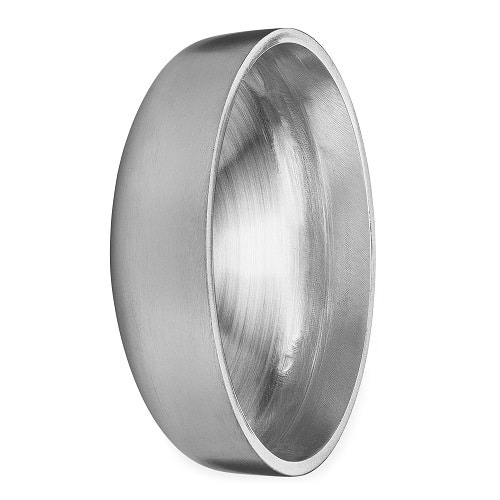
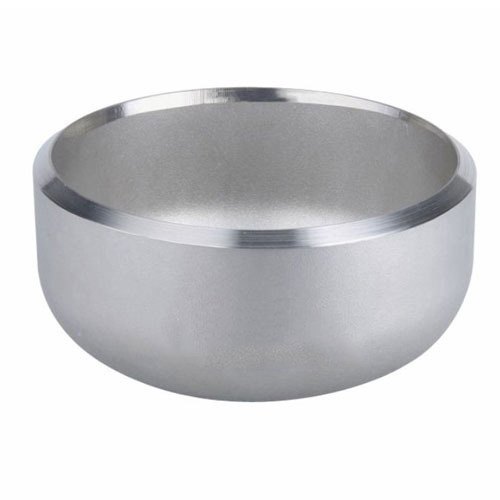
ANSI / ASME B16.9 pulou faʻapipiʻi faʻapipiʻi o ni vaega taua i faiga paipa falegaosimea, e maua ai se tapunia saogalemu ma le leak-proof mo pito paipa. O lo latou usitaia o tulaga o le ANSI ma le ASME, feso'ota'iga fa'amau, fa'amaufa'ailoga agava'a, ma le agava'a e mana'omia ai i fa'aoga eseese i pisinisi. Faatasi ai ma pulou faʻapipiʻi, inisinia ma tagata faʻatautaia e mafai ona faʻamautinoa le amiosaʻo, saogalemu, ma le lelei o latou faiga paipa, fesoasoani i galuega faʻalelei ma leai ni faʻalavelave.







